Meteorology:
What is it?
Generally speaking, we consider meteorology to be the state of the atmosphere.
So, this unit will be spent learning about the atmosphere.
Layers...
Temperature...
Clouds...
Humidity...
Precipitation...
Storms (hurricanes, tornadoes, blizzards, etc.)...
Winds...
Pressure...
Fronts...
Air masses...
Predicting weather...
Climate...
Layers
Let's begin by looking at the layers:
As you can see, the atmosphere layers are split up by "pauses" where the temperature changes.
As you can see, the layers are determined by what happens to the temperature. Why does the temperature change with each layer?
As you rise through the troposphere, you get further from the warm Earth making things get cold.
Then, you hit to ozone layer in the stratosphere. This ozone absorbs UV rays from the sun, so it is warmed (from the top down), so this layer gets warmer as you rise through it.
Next, you hit the mesosphere. At this point, the air is very thin. Fewer air molecules mean less energy = coldness. So, as you rise through this layer, the air gets colder (and thinner).
Then you hit the thermosphere. This layer absorbs many other rays of the sun (i.e. X-rays) and is hotter as you rise through it for the same reason as the stratosphere.
You can call everything outside of that, the exosphere if you want.
You also can call the layer of ions (everything above roughly 65 km) the ionosphere. Here is another way to look at it with these last two layers:
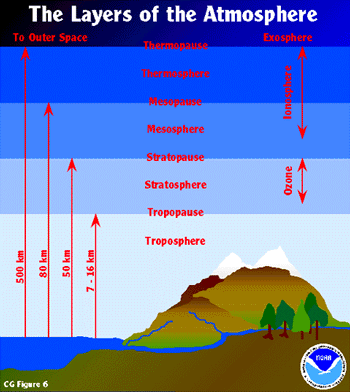
The change in temperature due to a change in pressure (elevation) is called Adiabatic temperature change:

Here is a better way to visualize adiabatic temperature change:

Heating
As you can see, temperature plays a large role in determining what layer you are in. Let's look closer at temperature:
The sun's incoming energy drives weather and is the ultimate source of almost all this heat energy.
InSolAtion (incoming solar radiation):
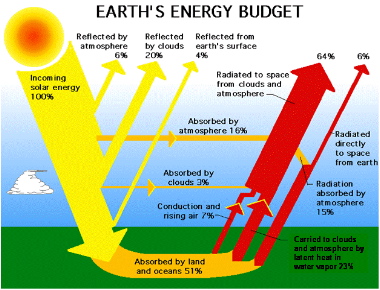
There is a balance between incoming solar radiation and outgoing reflected and radiated energy. If more comes in than goes away, the Earth heats up. If more goes away than comes in, the Earth cools off. Earth has remained remarkably stable over its exsistence while also fluctuating warmer and colder (within a narrow 100 degree range).
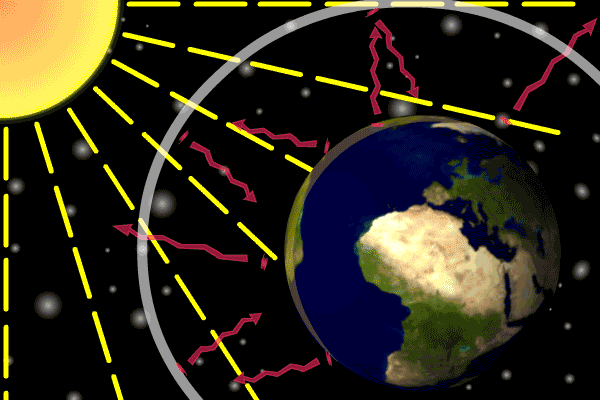
What are the factors influencing insolation absorption?
Angle:
Color,
texture,
sheen / reflectivity,
etc.
We will do an investigation into these factors.
We also will map the temperatures around Riverside and make isotherm maps.

Heat moves around the Earth via conduction, convection, and radiation:
Convection of heat leads to pressure differences:
Another way to look at heat in the atmosphere is by looking at the air pressure.
Which would weigh more, hot air or cold air?
So which would have greater pressure?

Air pressure tells you about the temperature of the atmosphere and that has effects on everything.
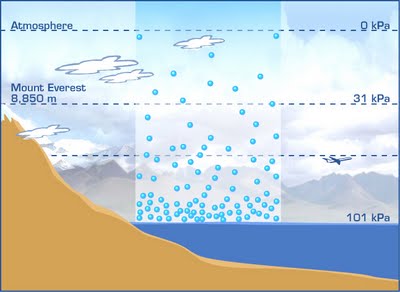
Water in the air
A lot of weather is the interplay between temperature and water in the air.
Water in the air is called humidity.
Absolute humidity is the ratio of water vapor to gas molecules in the air, ranges from 0 to 30 g/m3, and is mostly useless information.
Relative humidity is the ratio of water vapor in the air relative to the amount of water vapor that can be in the air and is vital information.
Relative humidity changes with the temperature since the about of water vapor that can be in the air changes with temperature:
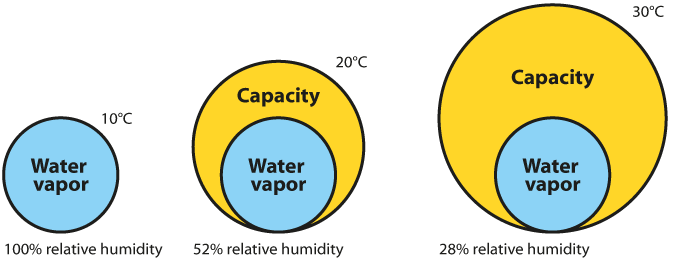
This means that if you heat up an area, the air gets relatively dryer.
Conversely, if you cool an area down, the air gets wetter and wetter until...
...dew point: the temperature at which the relative humidity = 100%.
If you cool air down past the dew point, the excess water condenses on any nuclei it can find and you get dew, frost, rain, snow, glaze, sleet, drizzle, clouds, fog, hail, etc.
The condensed water forms clouds:
These clouds form at different heights based on where they reach the dew point (based on temperature and humidity)
They are shaped by winds
They are simply water condensed onto some nuclei.
Once there is too much water to stay up, it precipitates:
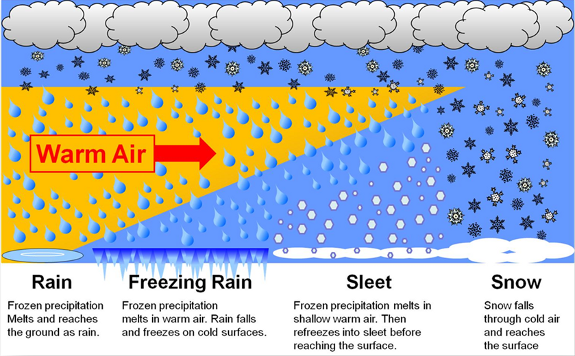
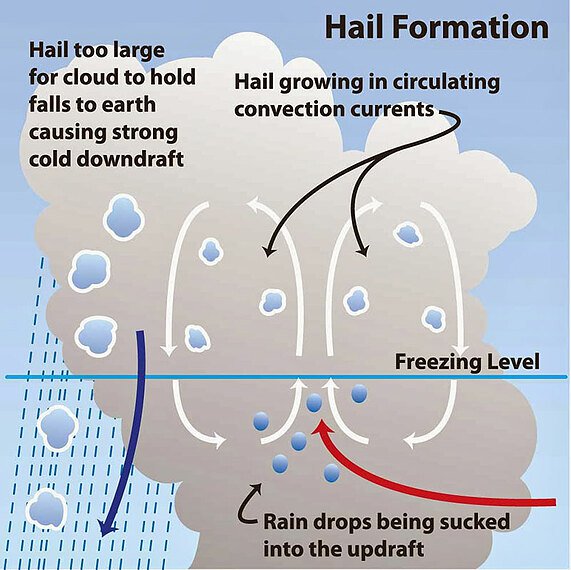
Since water will condense out whenever the air gets cold enough, and the air gets cold when it gets higher, air that is forced up and over mountains will precipitate out:
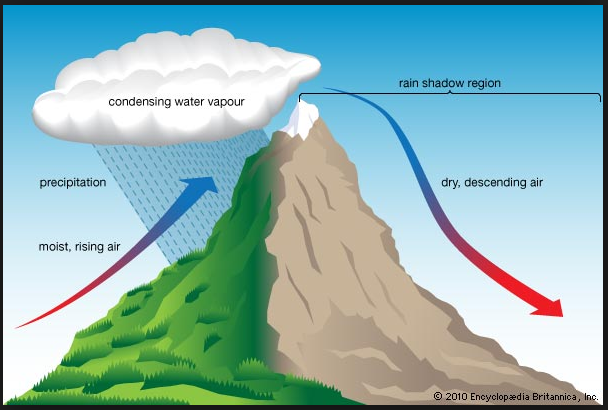
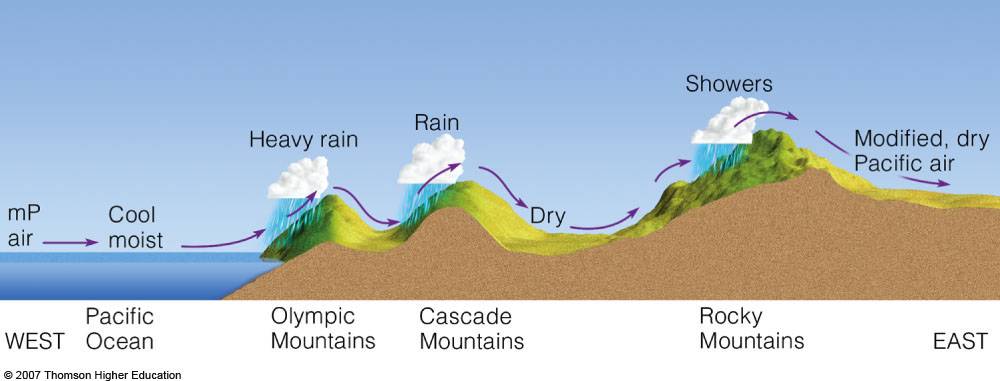
Winds
Uneven heating leads to uneven pressure which leads to winds:
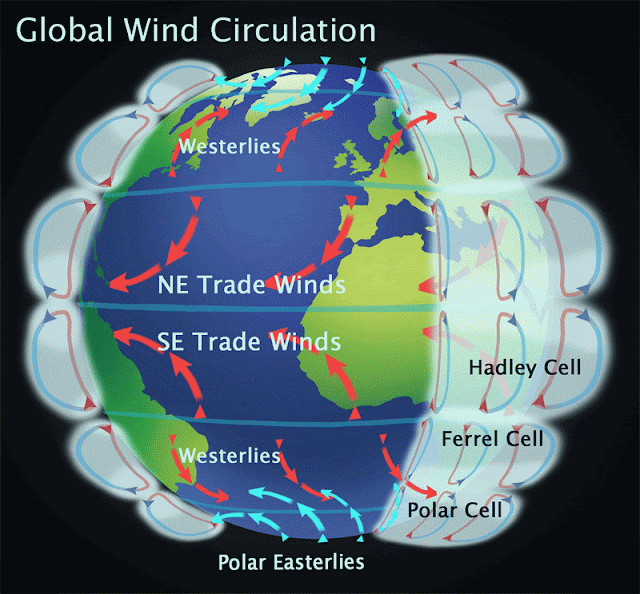
As you can see, the warm equator makes air rise. The cold poles makes air sink. The winds blow from high pressure towards low pressure.
The coriolis effect shifts these such that after about 30 degrees, they are blowing East or West.

Masses and fronts
If air sits over an area long enough, it takes on properties of that area which we call an air mass:

Where air masses come together, there are "fronts":

These fronts have weather patterns that accompany them.
Cold front:
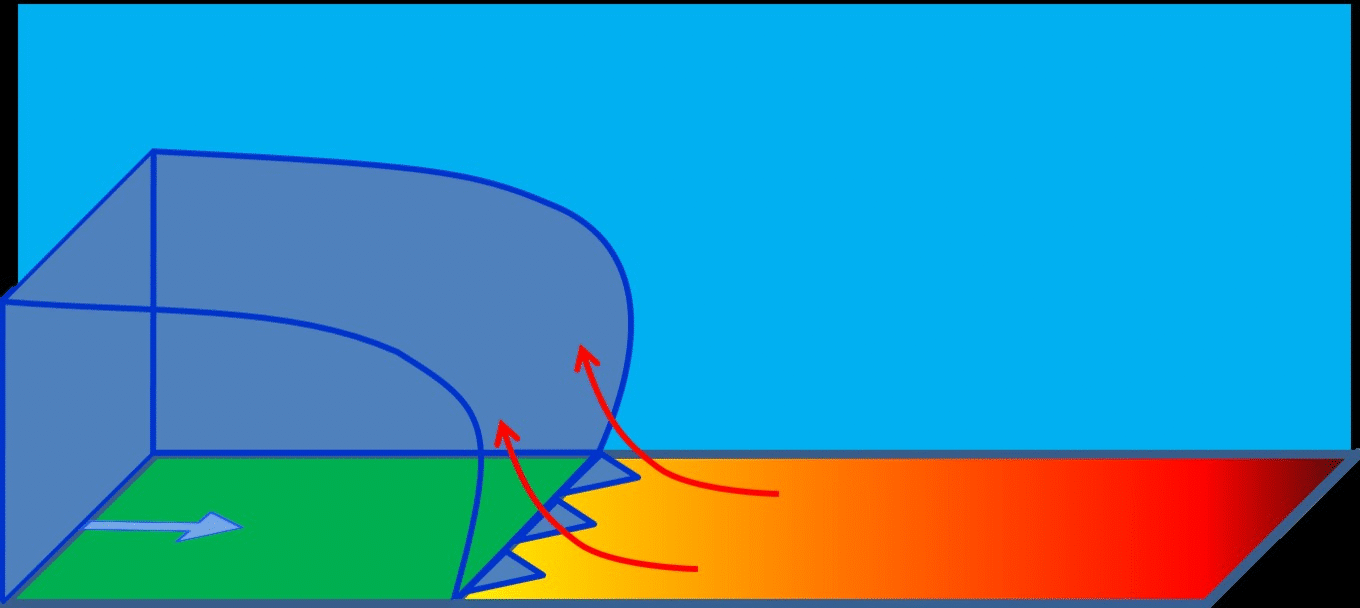
Warm front:

Occluded Front
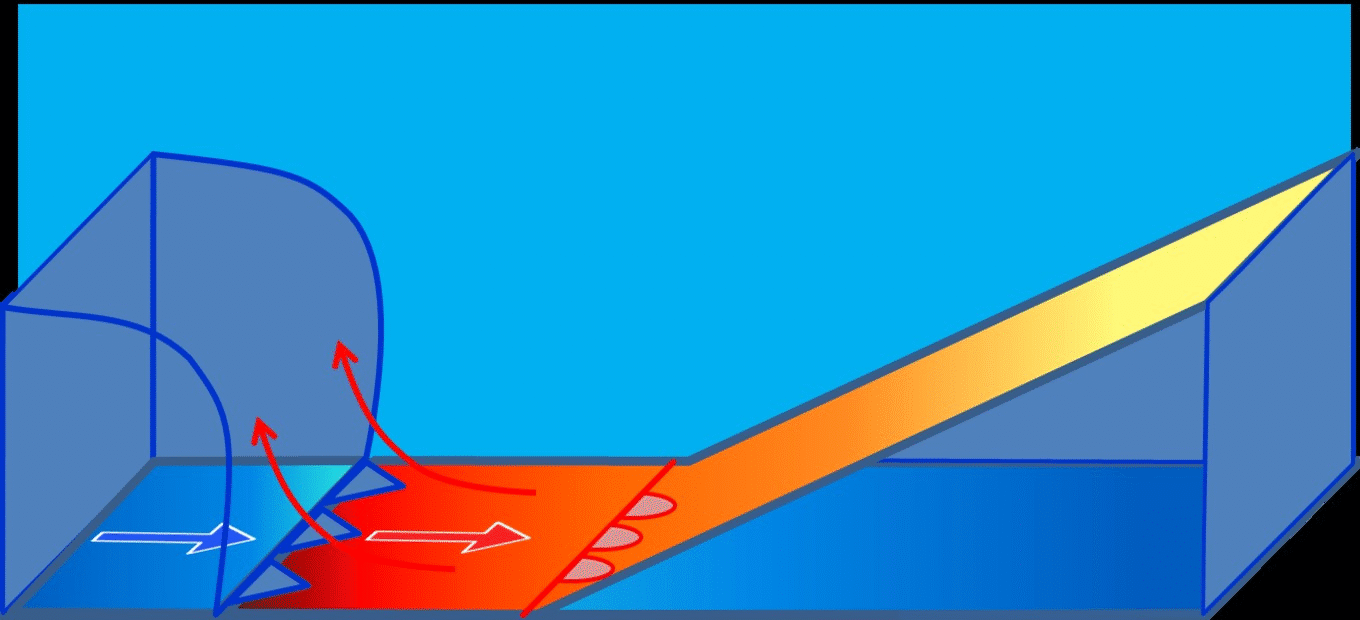
Stationary front:
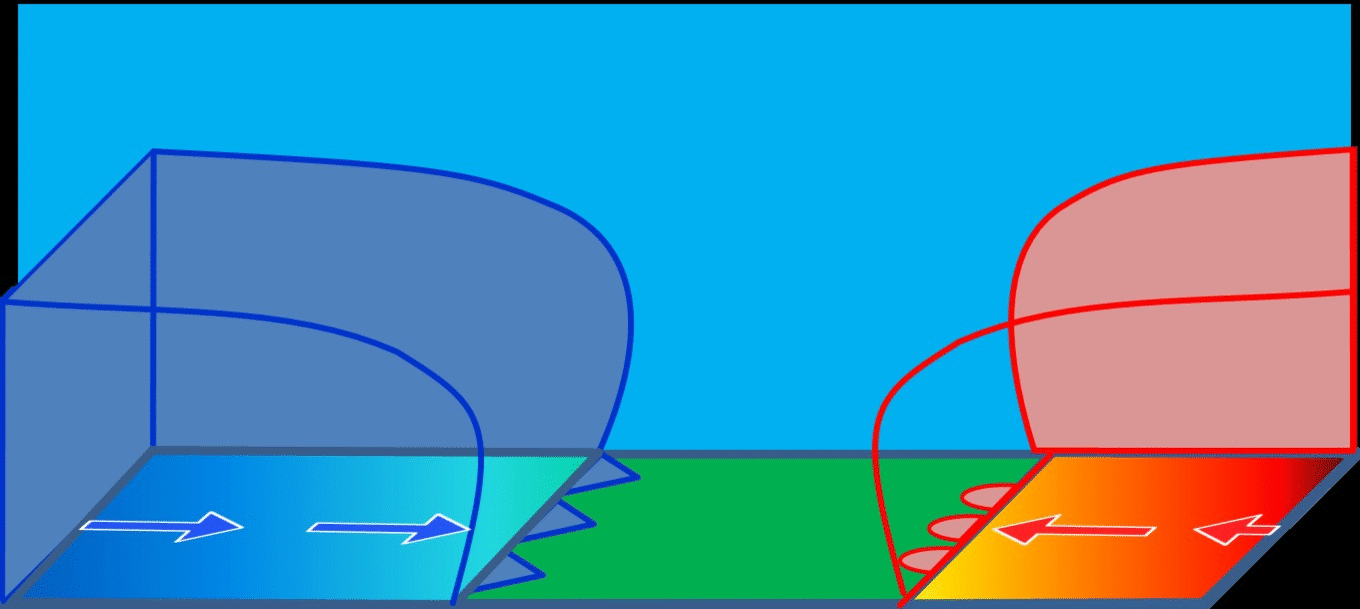
On a weather map, these are represented by these:

Storms
Sometimes things get scary/exciting:

Thunderstorms!

Tornadoes


Hurricanes:

Blizzards:
Predicting weather is based on looking at the fronts and what has happened in the past and the geography and taking your best guess.
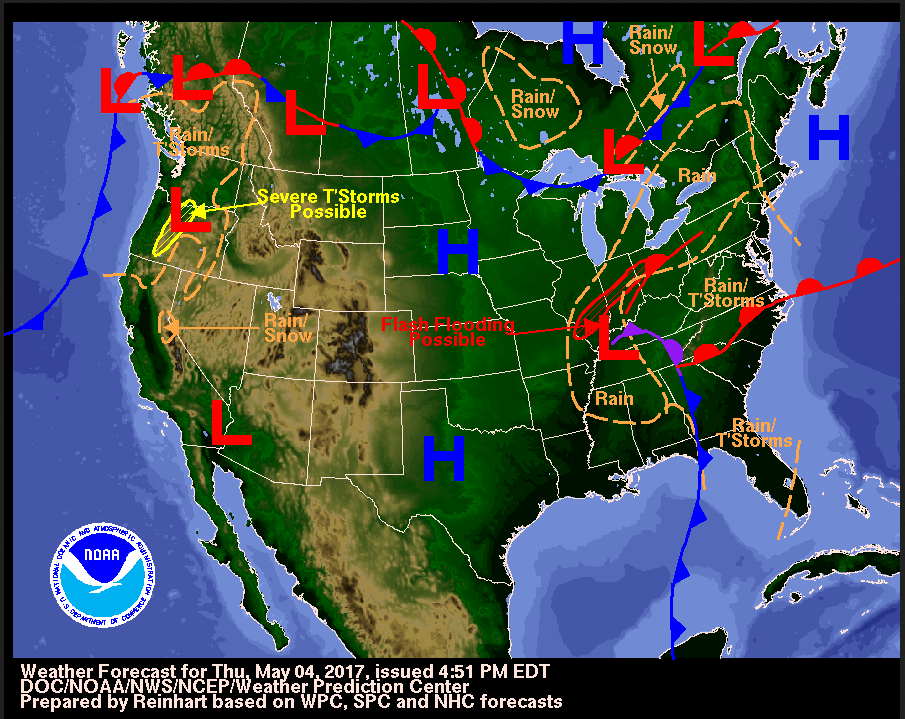
So, by looking at the lines of temperature / pressure, and the humidity, and the air masses, and the prevailing winds, and the geography, we can make a prediction about the type of weather an area will get. We may get these predictions wrong a lot, but they are based on what we know.
Climate:
Climate is the average weather an area gets over a long time (30 years).
What are the factors influencing an areas climate?
Latitude...
Altitude...
geography...
Nearby bodies of water...
Prevailing winds...
Climate change.
If we define that climate is the average weather (temperature and humidity) of an area over 30 years, there is no doubt that the Earth's climate is changing.
Causes?


So, carbon dioxide (and other gasses) catch the radiated energy and trap it in, keeping Earth warm. Too much, and the Earth warms up. As you can see, Earth has been like this a long time, with regular fluctuations of CO2 and heat.
Climatologists, who study this for a living, agree that humans are producing CO2 at a faster rate than nature has ever seen and predict that this will lead to a warming Earth at a rate not seen before. This could lead to melting the ice sheets and rising sea levels.
